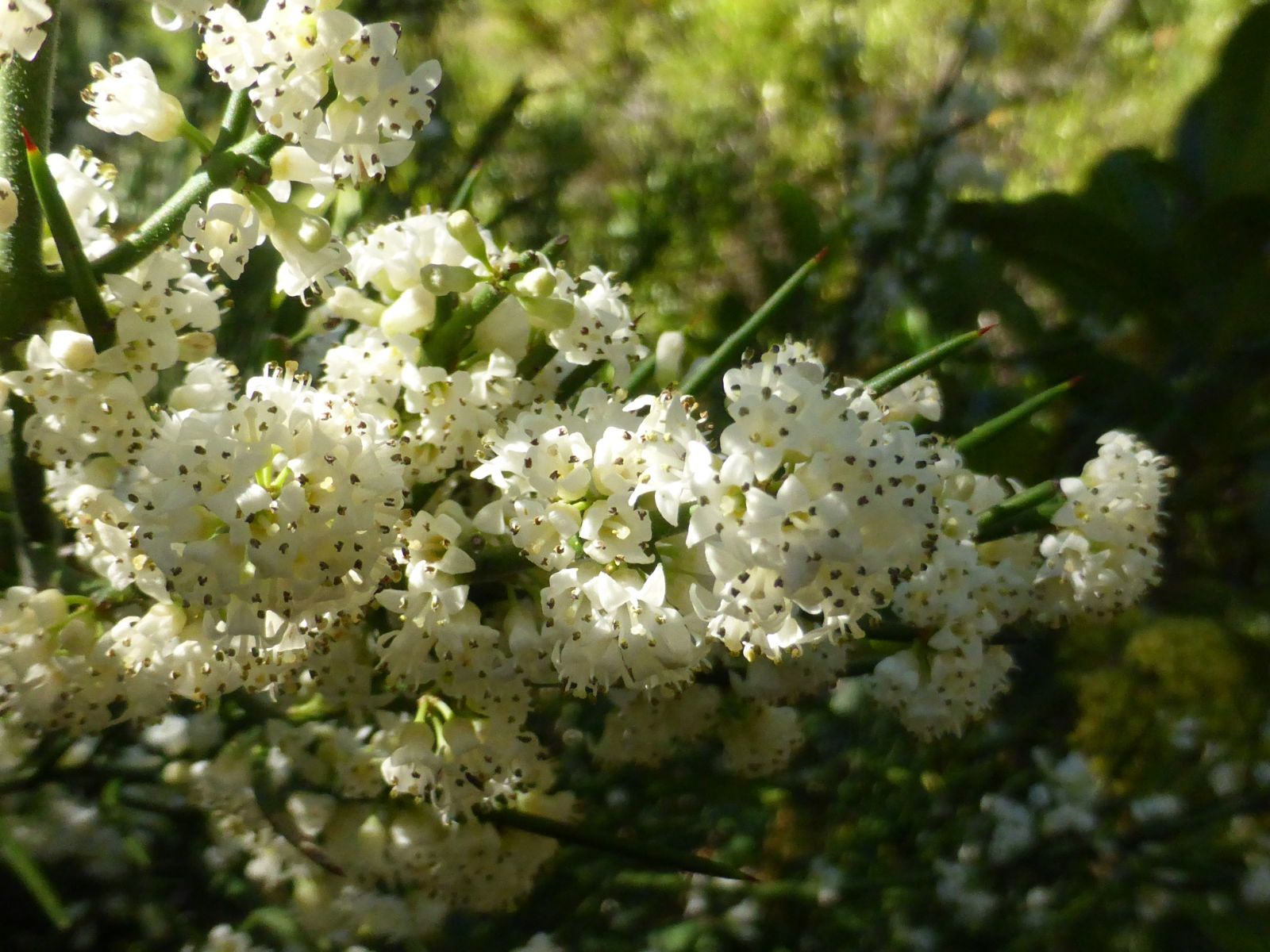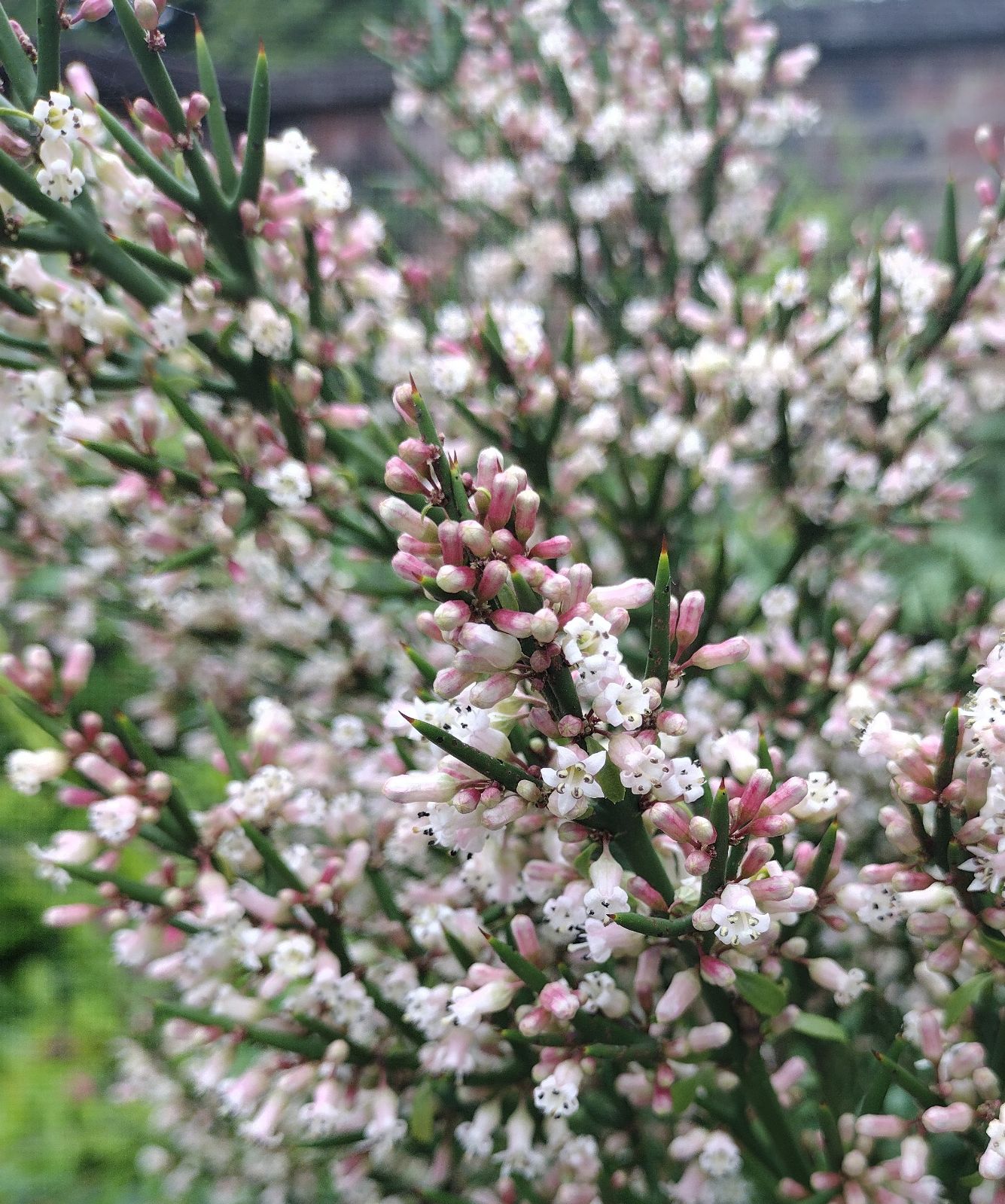Colletia hystrix
Credits
Article from Bean's Trees and Shrubs Hardy in the British Isles
Recommended citation
'Colletia hystrix' from the website Trees and Shrubs Online (treesandshrubsonline.
Genus
Synonyms
- Colletia armata Miers
- C. spinosa var. armata (Miers) Reiche
- C. valdiviana Phil.
A deciduous shrub eventually 8 to 12 ft high, the younger parts consisting almost entirely of greyish-green, terete (i.e. circular in cross-section) spines which are usually distinctly downy and 1⁄2 to 11⁄2 in. long, very rigid and sharply pointed. Flowers waxy, produced in twos or threes on the spines, fragrant like hawthorn, white, tubular, 1⁄8 in. long, the five lobes recurved; anthers standing out visibly from the mouth of the flower. Leaves when present 1⁄8 to 1⁄2 in. long, not so wide, tapered at the base, often toothed, glabrous. Fruit composed of three united roundish capsules each 1⁄8 in. wide and carrying a single seed.
Native of S. Chile in the provinces of Valdivia and Llanquihue; introduced by Messrs Veitch between 1880 and 1884. It flowers between September and December. It is closely allied to C. spinosa Lam., which, taken in a broad sense, is a very polymorphic species of which C. hystrix might well be considered a variety. Typical C. spinosa does not appear to be in cultivation. C. hystrix very much resembles C. infausta in its bodkin-shaped spines, but that species has no down on the spines or elsewhere, its anthers are more hidden, and it flowers from March to June.
From the Supplement (Vol. V)
This species has attained about 20 ft in height and breadth in a garden at Minehead, Somerset (Journ. R.H.S., Vol. 98 (1973), p. 28).


